
Copernical Team
Scientists investigate using lunar soils to sustainably supply oxygen and fuels on the moon

Building up a lunar settlement has been the ultimate aim of lunar exploitation since humanity's first step on the moon. Yet, limited fuel and oxygen supplies restrict human survival on the moon.
Combining photovoltaic and electrocatalysis, the artificial production of hydrocarbon fuels along with oxygen using carbon dioxide and water as the feedstocks has been demonstrably feasible on the Earth and is recognized as a potential strategy to be imitated in extraterrestrial sites. With the rapid progress of moon exploration, researchers have discovered that the moon's surface has considerable carbon dioxide and water reserves, which further confirms the feasibility of the idea.
Against this background, the joint research team of the University of Science and Technology of China, Nanjing University and China Academy of Space Technology found that the lunar soil brought back by the Chang'e 5 mission can be used as a catalyst to drive the electrocatalytic CO2 conversion for fuel and oxygen production.
NASA and ESA agree on next steps to return Mars samples to Earth
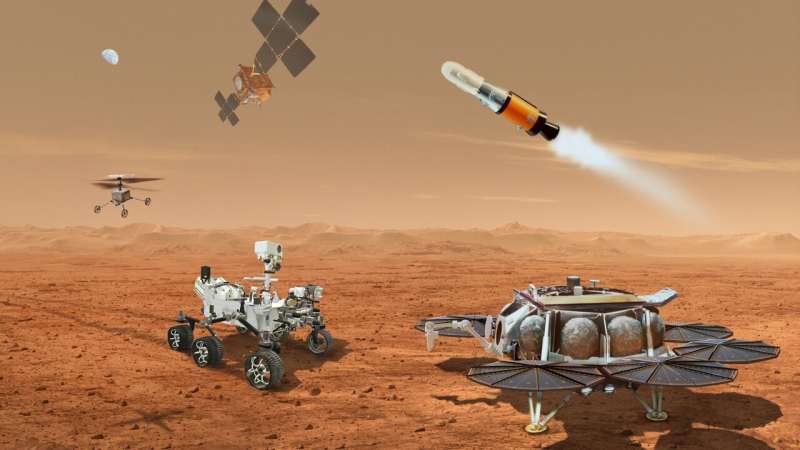
The next step in the unprecedented campaign to return scientifically selected samples from Mars was made on Oct. 19 with a formal agreement between NASA and its partner ESA (European Space Agency). The two agencies will proceed with the creation of a sample tube depot on Mars. The sample depot, or cache, will be at "Three Forks," an area located near the base of an ancient river delta in Jezero Crater.
This cache will contain samples from carefully selected rocks on the surface of Mars—samples that can help tell the story of Jezero Crater's history and how Mars evolved, and could perhaps even contain signs of ancient life.
NASA continues Psyche asteroid mission
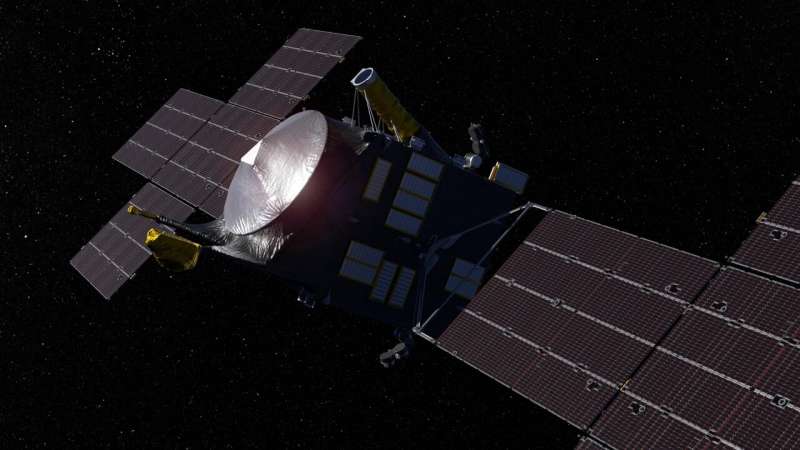
NASA announced Friday the agency decided its Psyche mission will go forward, targeting a launch period opening on Oct. 10, 2023.
Earlier this year, Psyche missed its planned 2022 launch period as a result of mission development problems, leading to an internal review of whether the mission would be able to overcome these issues to successfully launch in 2023.
This continuation/termination review was informed by a project-proposed mission replan and a separate independent review, commissioned in June by NASA and the agency's Jet Propulsion Laboratory in Southern California, that investigated causes for the delay.
"I appreciate the hard work of the independent review board and the JPL-led team toward mission success," said Thomas Zurbuchen, associate administrator of NASA's Science Mission Directorate in Washington. "The lessons learned from Psyche will be implemented across our entire mission portfolio. I am excited about the science insights Psyche will provide during its lifetime and its promise to contribute to our understanding of our own planet's core.
NASA's Lunar Flashlight ready to search for the Moon's water ice
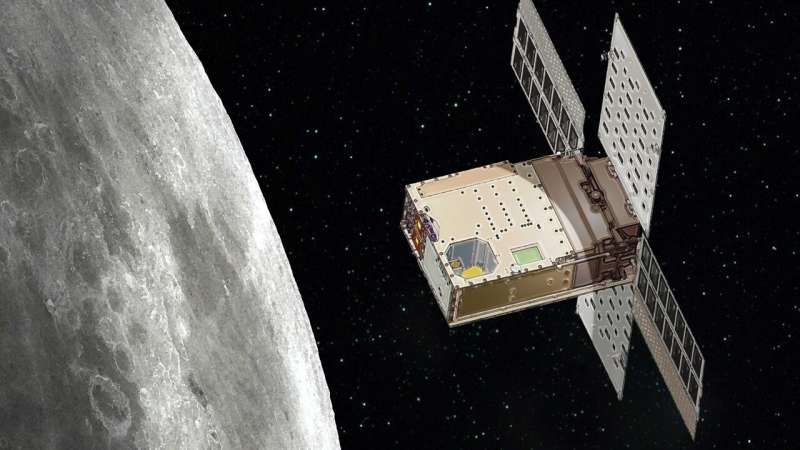
It's known that water ice exists below the lunar regolith (broken rock and dust), but scientists don't yet understand whether surface ice frost covers the floors inside these cold craters. To find out, NASA is sending Lunar Flashlight, a small satellite (or SmallSat) no larger than a briefcase. Swooping low over the lunar South Pole, it will use lasers to shed light on these dark craters—much like a prospector looking for hidden treasure by shining a flashlight into a cave.
Webb's portrait of the Pillars of Creation (MIRI)
 Image:
Image:
The NASA/ESA/CSA James Webb Space Telescope’s mid-infrared view of the Pillars of Creation strikes a chilling tone. Thousands of stars that exist in this region disappear from view — and seemingly endless layers of gas and dust become the centrepiece.
The detection of dust by Webb’s Mid-Infrared Instrument (MIRI) is extremely important — dust is a major ingredient for star formation. Many stars are actively forming in these dense blue-grey pillars. When knots of gas and dust with sufficient mass form in these regions, they begin to collapse under their own gravitational attraction, slowly heat up, and eventually
Webb’s instruments showcase the Pillars of Creation (slider)
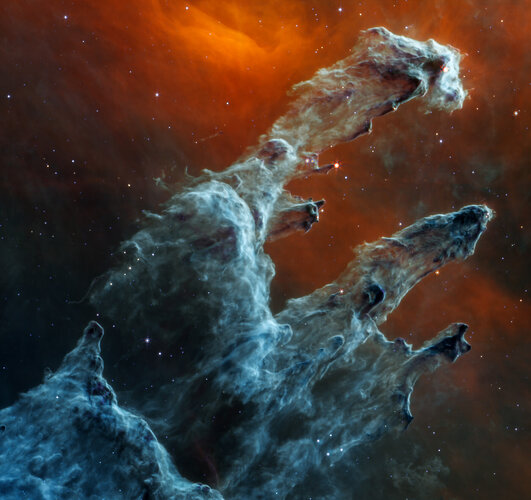 Image:
Image:
The NASA/ESA/CSA James Webb Space Telescope has revealed two new views of the Pillars of Creation, which was made famous by the NASA/ESA Hubble Space Telescope in 1995, and again in 2014.
On the left is Webb’s Mid-Infrared Instrument (MIRI) image. Interstellar dust cloaks the scene. And while mid-infrared light specialises in detailing where dust is, the stars aren’t bright enough at these wavelengths to appear. Instead, these looming, leaden-hued pillars of gas and dust gleam at their edges, hinting at the activity within. Learn more about this image here.
On the right is Webb’s
Presentations from SOLARIS Industry Day
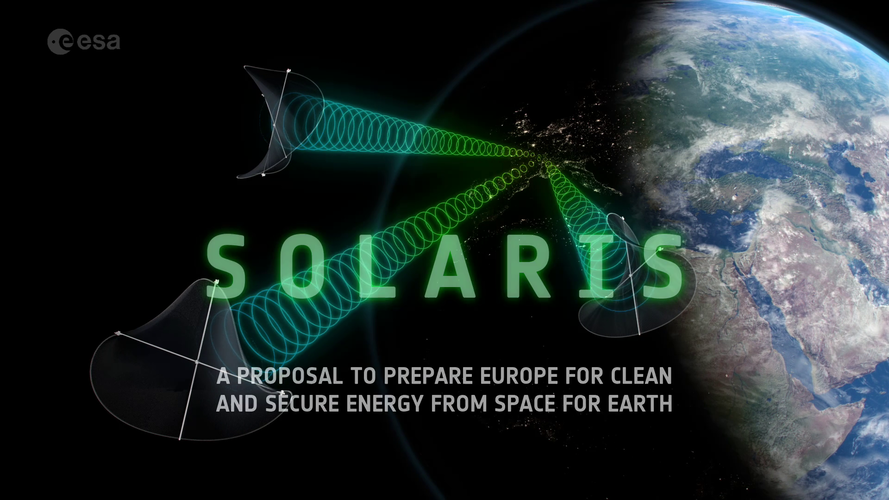
To support the preparation of the SOLARIS initiative on Space-Based Solar Power, to be proposed at ESA's Ministerial Council next month, the Agency organised the first SOLARIS Industry Day.
The event took place at the ESTEC technical centre in the Netherlands and online on 18 October 2022.
Week in images: 24-28 October 2022

Week in images: 24-28 October 2022
Discover our week through the lens
Haunting portrait: Webb reveals dust and structure in Pillars of Creation

This is not an ethereal landscape of time-forgotten tombs. Nor are these soot-tinged fingers reaching out. These pillars, flush with gas and dust, ‘bury’ stars that are slowly forming over many millennia. The NASA/ESA/CSA James Webb Space Telescope has snapped this eerie, extremely dusty view of the Pillars of Creation in mid-infrared light – showing us a new view of a familiar landscape.
SOLARIS Industry Day - update

To support the preparation of the SOLARIS initiative on Space-Based Solar Power, to be proposed at ESA's Ministerial Council next month, the Agency organised the first SOLARIS Industry Day.
The event took place at the ESTEC technical centre in the Netherlands and online on 18 October 2022.
